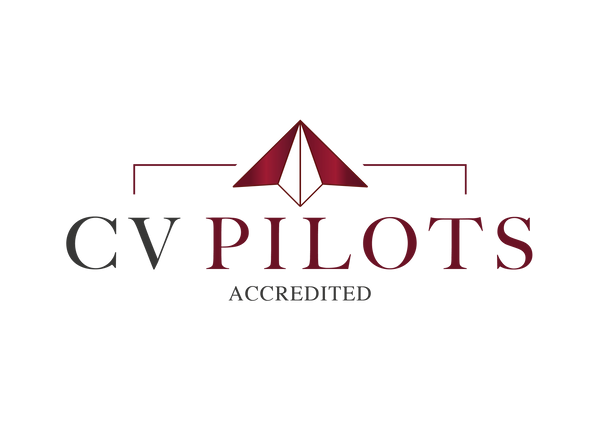
How to Adapt Your CV for LinkedIn | CV Pilots
How to Adapt Your CV Content for Your LinkedIn Profile
When it comes to presenting yourself to employers, your CV and your LinkedIn profile work hand in hand — but they shouldn’t be carbon copies of each other.
Your CV is a tailored, formal document designed for specific job applications. LinkedIn, on the other hand, is a professional networking platform with its own tone, structure, and audience.
In this article, we’ll explain:
-
How your CV and LinkedIn profile should differ
-
Which elements need to align
-
Our top do’s and don’ts when developing LinkedIn content
-
Why adapting — not copying — is essential
If you’re ready to take the guesswork out of job applications and
give yourself a genuine competitive edge, our CV Reviews and
CV Template Bundles are designed to help you stand out in even
the toughest hiring markets.
CV Reviews – Save £60
If you’re not sure your CV is truly working for you, our
Professional CV Review Service provides in-depth, recruiter-level
feedback on content, structure, and ATS compatibility. You’ll receive
a personalised action plan showing exactly what’s holding you back
and how to fix it, so you can apply with confidence. Use discount code
PCVR60 at checkout to save £60 and give your next application the
competitive edge it deserves.
CV Template Bundles – Save £40
Prefer to write your own CV but want a proven framework? Our
CV Template Bundles include an ATS-friendly, recruiter-approved
template, plus our storytelling framework, metrics tracker, CV checklist,
and scorecard - everything you need to create a document that sells
your skills and achievements. Use discount code CVTB40 to get
£40 off and start building a CV that gets noticed for all the right
reasons.
These tools pull back the curtain on the hiring process, cutting
through the smoke and mirrors so you understand exactly what
employers and ATS systems are really looking for
How should my CV differ from my LinkedIn profile?
Think of your CV as the polished brochure you send to an employer, while your LinkedIn is your professional storefront — a public-facing profile that gives recruiters a quick, accessible overview of who you are.
Here are two key differences:
1) Tone and detail
-
CV: Highly structured, written in third person (no “I”), focused on achievements, and tailored to each role you apply for.
-
LinkedIn: More conversational, written in first person, and allows you to showcase additional aspects of your professional identity, such as:
-
Skills endorsements
-
Recommendations from colleagues or managers
-
Links to published work or portfolios
-
Interests, certifications, and extracurricular involvement
-
2) Confidentiality and accessibility
Your CV is private and usually only seen by the employer or recruiter you send it to. LinkedIn, by default, is public.
-
Avoid including confidential company data.
-
Where necessary, use percentages instead of absolute figures (e.g., “increased revenue by 50%” rather than “from £2M to £3M”).
Which elements of your CV and LinkedIn should align?
Consistency builds credibility. Hiring managers will expect to see exact alignment between:
-
Job titles
-
Dates of employment
-
Company names
Even small discrepancies (e.g., overlapping dates or modified job titles) can create doubt and may raise red flags about accuracy.
Always cross-check both documents to ensure the basics match.
Do’s and Don’ts for LinkedIn Content
DO:
-
Add extra information you don’t have space for on your CV (skills, publications, voluntary roles, links).
-
Include a first-person professional summary that highlights your value proposition.
-
Ask for recommendations and endorsements to strengthen credibility.
-
Use keywords relevant to your target roles to improve visibility in recruiter searches.
DON’T:
-
Copy and paste your CV word-for-word. LinkedIn should be a snapshot, not a duplicate.
-
Disclose confidential company data.
-
Change job titles or dates to “sound better” — integrity matters.
-
Keep it overly formal. LinkedIn is professional, but personality helps.
Why adapting is more effective than copying
If you paste your full CV into LinkedIn, you leave recruiters with no reason to reach out — they already know everything.
Instead, treat your profile as a teaser. Give just enough detail to spark interest, but save your strongest, quantified achievements for your CV.
For example:
-
LinkedIn: “Led strategic initiatives to expand into new markets.”
-
CV: “Launched three new product lines across Europe, generating £10M in incremental revenue within 12 months.”
This approach leaves recruiters wanting more and increases the chance they’ll contact you directly.
In Summary
Your CV and LinkedIn are two sides of the same coin.
-
Your CV: A targeted, in-depth sales pitch for a specific role.
-
Your LinkedIn profile: A professional preview that’s public, personable, and discoverable.
By aligning the essentials while adapting tone and content, you’ll create a professional portfolio that is both credible and compelling — and that maximises your visibility with employers and recruiters.
To find out more, visit our website www.cvpilots.co.uk If you have any further questions, you can either book a consultation call with one of our team, or get in touch via email on team@cvpilots.co.uk

